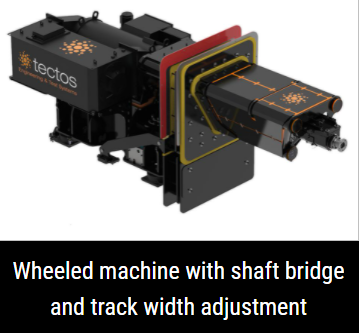Challenges in the automotive NVH industry

Dr Stefan Maxl outlines the challenges of noise, vibration, and harshness (NVH) present across the automotive industry.
At a time of profound change, the European automotive industry is facing major challenges. Not only in the fight against climate change, but serious geopolitical changes in the supply chain make a sustainable adaptation in this industry necessary. Whether opting to transition from internal combustion engines (ICE) to a fully electrified powertrain or a software-defined vehicle, the automotive industry needs a clear path to master these challenges. This also applies to the development and testing industry, which crucially supports original equipment manufacturers (OEMs).
These necessary changes mean that noise, vibration, and harshness (NVH) will play a more important role as an integral part of the research and development process in the future, with efficiency in simulation and testing at the forefront. However, a change in technology, and the way engineers think, is required to overcome the challenges ahead.
Challenge accepted
New developments in the automotive, aerospace and defence sectors are leading to an increase in demand for NVH engineering. This applies not only to established markets but also emerging markets as the demand for individual mobility is growing rapidly.
The change and development in technologies also cause new NVH challenges for engineers. The increasing trend of ICE downsizing and speeding, new hybrid and fully electric powertrains, and overall technological advancements require improved NVH simulation, testing and service products. This applies to interior and exterior noise reduction as well as structural dynamics and torsional vibration investigations throughout the entire development phase.
To succeed in the NVH industry, it will be necessary to work with highly-educated engineers with a general understanding of different engineering domains. Even if NVH has its roots in the field of machine dynamics, it cannot longer be seen as a pure mechanical task.
Modern NVH tasks combine several disciplines of engineering. Starting with simulations in an early concept phase and post-processing of data sets, NVH engineers must have basic software and analysis skills. When it comes to measurement campaigns, an overall system understanding, and good electrical engineering skills, are mandatory. Based on the conducted simulations and measurements changes in the mechanical design or sometimes even in the control of, for example an e-motor, can be necessary to optimise the overall NVH performance. Hence, modern mechatronics systems need different points of view to holistically solve challenges in the development phase of a new product.
Embrace innovation
A best practice example of the mixture of different technologies and engineering domains can be found in the latest generation of NVH e-axle test cells. One of these test-cells can be found at the Research Institute for Automotive Engineering and Powertrain Systems Stuttgart (FKFS).
Together with the FKFS, Tectos designed, installed, and validated a single-axle NVH powertrain test bench. This bench can operate powertrains which are powered by electric motors, hybrid drivetrains and ICEs. The cell, which has a lower limit frequency of 125Hz, is equipped with the necessary fuel supply and an exhaust gas extraction system. The drivetrain was especially designed for this application using a self-supporting shaft assembly in a fully anechoic cell. This concept minimises possible transmission of structure-borne noise between the dynamometers, which are mounted outside of the test cell, and the unit under test (UuT).
The whole test-cell drivetrain is decoupled from the base structure to ensure an ideal structural dynamics behaviour during operation. Besides realising these mechanical engineering related properties, the test cell was equipped with a fully variable network, an automation system and an in-house developed condition-monitoring system for the complex drivetrain.
Furthermore, a safety concept was implemented which allows instructed operators to enter the test cell at low speeds and torques and thus get an individual noise impression of the UuT. This concept enables the users to investigate modern powertrain topologies at the highest technical level combined with economically competitive conditions. The figures show the schematics of the test-cell layout and one side the NVH drivetrain.
This example outlines the need of new technologies and highly skilled engineers to successfully build such testing facilities. This project was only possible because Tectos experts from different domains closely worked together using the latest design methodologies and tools. This includes mechanical, mechatronics and electrical engineers with a strong background in NVH engineering.
Although all engineers have their own field of expertise, a broad understanding of the whole test cell is required during all project phases. Moreover, a deep understanding of the powertrains which should be optimised is crucial. Engineers at Tectos are ready to meet the increasing demand for NVH technology, services, and testing, providing high class solutions to challenges in this area of expertise.
1.The news above mentioned with detailed source are from internet.We are trying our best to assure they are accurate ,timely and safe so as to let bearing users and sellers read more related info.However, it doesn't mean we agree with any point of view referred in above contents and we are not responsible for the authenticity. If you want to publish the news,please note the source and you will be legally responsible for the news published.
2.All news edited and translated by us are specially noted the source"CBCC".
3.For investors,please be cautious for all news.We don't bear any damage brought by late and inaccurate news.
4.If the news we published involves copyright of yours,just let us know.
Next Timken Reports First-Quarter 2024 Results; Raises Full-Year Outlook
BRIEF INTRODUCTION
Cnbearing is the No.1 bearing inquiry system and information service in China, dedicated to helping all bearing users and sellers throughout the world.
Cnbearing is supported by China National Bearing Industry Association, whose operation online is charged by China Bearing Unisun Tech. Co., Ltd.
China Bearing Unisun Tech. Co., Ltd owns all the rights. Since 2000, over 3,000 companies have been registered and enjoyed the company' s complete skillful service, which ranking many aspects in bearing industry at home and abroad with the most authority practical devices in China.



